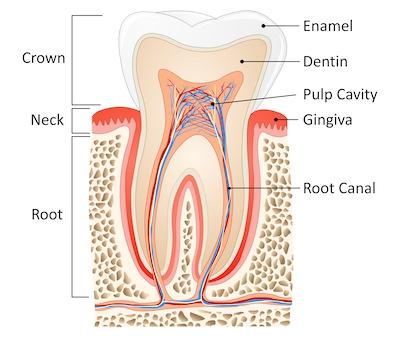
Typically, dental cavities start small, and treatment at this stage is straightforward. Your Corona dentist anesthetizes the treatment area, clears the cavity, and then seals it with a tooth-colored filling. Afterward, your tooth is restored, and you can continue to enjoy your favorite foods without worry.
Advanced tooth decay is another story!
Let’s explore what happens when cavities are allowed to advance and how to prevent tooth decay.
Advanced Tooth Decay Means Time and Money
A Dental Crown in Corona
Large areas of decay can weaken your tooth and even cause crumbling. If a cavity is too large or advanced, your dentist will forgo the straightforward filling and cap the tooth with a dental crown. This is more time-consuming and costly.
A Root Canal Infection
Sometimes, tooth decay spreads to the tooth canal, leading to a costly and painful dental emergency in Corona. A root canal means two appointments—one to clear the infection from the canal and another to cap it with a dental crown.
A Dental Extraction with Tooth Replacement
A decayed tooth that has also crumbled to the gumline may not be ideal for crowning. In this case, your dentist must extract. And to keep your oral health on track, we’ll also talk to you about tooth replacement—two costly and avoidable scenarios.
Lower Your Risks for Tooth Decay
You should visit our dental office every six months for routine dental cleanings and exams. These visits include periodontal checks, oral cancer screenings, and periodic x-rays to detect hidden cavities and other difficult-to-spot dental issues.
At home, you should brush and floss after meals or at least twice daily. And consistently report oral health changes to your Corona dental team.
Schedule Your Next Exam and Teeth Cleaning Today
Are you overdue for your twice-yearly preventive visit? Contact a helpful dental team member to schedule your next visit.
